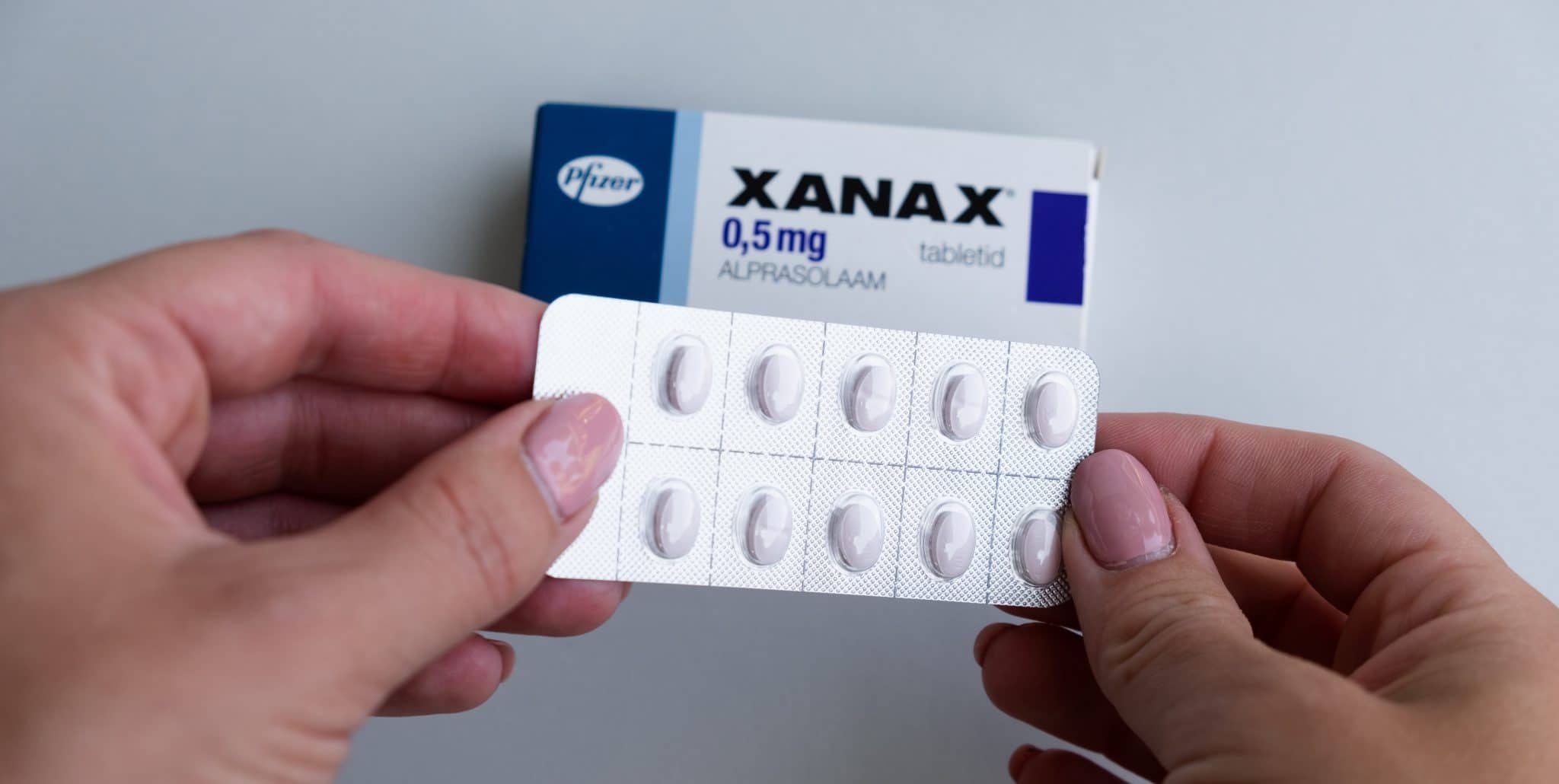
- Xanax
-
by saurabh1
Xanax (Alprazolam) is one of the most prescribed medications to manage anxiety and panic disorders. However, when used by elderly patients, this drug can carry specific side effects and risks due to their age-related physiological changes. This guide covers the side effects of Xanax in the elderly to help families and caregivers understand how to manage these challenges. If you’re planning to buy Xanax for an elderly loved one, it’s essential to be aware of these potential risks and safety considerations.
Table of Contents
- What Is Xanax?
- Why Is Xanax Prescribed to the Elderly?
- Common Side Effects of Xanax in the Elderly
- Serious Risks and Complications
- Tips to Minimize Side Effects
- Alternative Medications and Therapies
- Precautions to Take Before You Buy Xanax
- When to Contact a Doctor
- Conclusion
What Is Xanax?
Xanax (generic name: Alprazolam) belongs to a class of medications called benzodiazepines. It is widely used to treat anxiety, panic attacks, and insomnia by enhancing the effects of GABA, a neurotransmitter that calms the nervous system. People buy Xanax because of its fast-acting effects, making it particularly effective for individuals dealing with severe anxiety.

However, the use of Xanax in the elderly requires caution due to their increased sensitivity to medications and the higher likelihood of experiencing adverse effects.
Why Is Xanax Prescribed to the Elderly?
As people age, anxiety, insomnia, and panic attacks become more common, often due to health conditions, life changes, or loneliness. Doctors prescribe Xanax to help older patients manage:
- Generalized Anxiety Disorder (GAD)
- Panic Disorder
- Situational Stress
- Sleep Issues and Insomnia
However, the elderly may respond differently to this medication. Aging slows down metabolism, making the drug stay longer in their system, which can lead to a higher risk of side effects. If you decide to buy Xanax for an elderly loved one, it’s important to understand both its benefits and risks.
Common Side Effects of Xanax in the Elderly
Below are some common side effects elderly individuals may experience when taking Xanax. These effects tend to be more intense or prolonged in older patients due to slower drug metabolism.
1. Drowsiness and Fatigue
Many seniors report feeling excessively drowsy or fatigued after taking Xanax. While the sedative effect can help with anxiety, it may also interfere with daily activities.
2. Dizziness and Balance Issues
Older adults are more likely to experience dizziness, which can increase the risk of falls and injuries.
Alt Text for Image: “Elderly man feeling dizzy after taking Xanax.”
3. Confusion and Cognitive Impairment
Xanax can cause short-term memory problems or mental fog in the elderly, leading to difficulty in focusing or decision-making.
4. Digestive Issues
Some patients may experience nausea, constipation, or a dry mouth after taking Xanax. These side effects are usually mild but can be uncomfortable.
Serious Risks and Complications
While the common side effects of Xanax are generally manageable, more serious risks can occur, especially with long-term use or misuse.
1. Dependence and Addiction
Older adults who buy Xanax online or use it for extended periods may develop a dependence on the drug. This can lead to withdrawal symptoms if the medication is stopped abruptly.
Alt Text for Image: “Pill bottle showing Xanax tablets, indicating dependence risk.”
2. Falls and Injuries
The combination of drowsiness and dizziness makes seniors more prone to falls. Fractures and head injuries are serious concerns in this age group.
3. Respiratory Depression
Xanax can slow down breathing, which can be particularly dangerous for seniors, especially those with existing respiratory conditions like COPD.
4. Mood Changes and Depression
In some cases, elderly patients may experience mood swings, irritability, or even worsening depression while taking Xanax.
Tips to Minimize Side Effects
If you decide to buy Xanax for an elderly loved one, follow these tips to reduce the risk of side effects:
- Start with the lowest dose: Always follow the doctor’s prescription.
- Avoid alcohol and other sedatives: Combining these substances can increase risks.
- Use it only when necessary: Avoid long-term use unless absolutely needed.
- Monitor regularly: Keep track of any side effects and report them to a healthcare professional.
Alternative Medications and Therapies
Due to the risks associated with Xanax, some doctors recommend alternatives for anxiety and panic disorders in elderly patients, such as:
- Buspirone (for generalized anxiety)
- Selective serotonin reuptake inhibitors (SSRIs) like sertraline
- Cognitive Behavioral Therapy (CBT)
- Mindfulness techniques
These alternatives are often safer for long-term use.
Precautions to Take Before You Buy Xanax
Before purchasing Xanax, whether online or from a pharmacy, it’s important to:
- Consult with a doctor: Ensure it’s appropriate for the patient’s condition.
- Buy from reputable sources: Avoid counterfeit medications from unverified online pharmacies.
- Check for drug interactions: Especially if the patient is taking multiple medications.
- Monitor dosage carefully: Overdose can be life-threatening, especially for seniors.
When to Contact a Doctor
You should seek immediate medical attention if the elderly person taking Xanax shows signs of:
- Severe confusion or hallucinations
- Breathing difficulties
- Extreme fatigue or loss of consciousness
- Unexplained mood changes or suicidal thoughts
These symptoms may indicate serious complications requiring urgent care.
Conclusion
Xanax can be an effective treatment for anxiety and panic disorders, but it requires special caution when used by elderly patients. If you plan to buy Xanax for an older adult, it’s essential to understand both its benefits and potential side effects. With proper medical supervision, monitoring, and adherence to prescribed dosages, many of these risks can be minimized. However, always explore safer alternatives if the risks outweigh the benefits.
Alt Text for Image: “Doctor consulting an elderly patient about Xanax side effects.”
By following the tips and recommendations outlined in this article, caregivers and family members can make more informed decisions about buying Xanax and using it safely for elderly loved ones.


